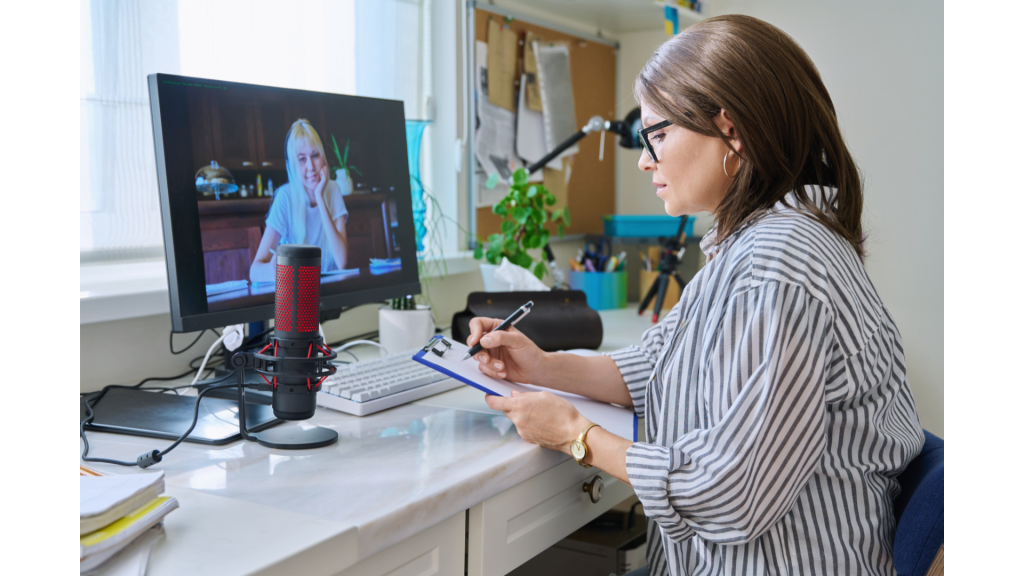Guided relaxation is a really useful skill to master if you are having panic attacks, as research has shown us that it can promote both psychological and physiological states of relaxation, which should interrupt your panic attack.
The purpose of this article is to discuss relaxation techniques and how they help with panic attacks. I shall also explain how to do guided relaxation. I will not discuss panic attacks themselves in too much depth, as I have already covered that here.
Panic Attacks Self-help

Dr Ryan’s online self-help course for Panic Attacks
The Science Behind Panic: Fight-or-Flight Response
Panic attacks are linked to the body’s fight-or-flight response. This is a natural reaction to perceived threats and, once activated, is responsible for the frightening symptoms that you experience in your body, and in order to calm down and stop your panic attack, you need to be able to calm your body to let it know that the stress response was not necessary. This is where guided relaxation comes in.
If you don’t try to calm your body, your symptoms will increase, and your mind will panic, and that is when your thoughts reach those scary places, so I encourage you to make some form of relaxation something that you do on a daily basis. I say daily as the idea is that the more you practice relaxing your body, the calmer you become and, as such, less likely to activate the fight or flight response in the first place. Also, practising every day means you are ready when you first notice panic coming on to take action and do something about it, negating the helpless feeling that panic can leave you with.
The effectiveness of relaxation techniques is often linked to regular practice. Just like physical exercise, these techniques require consistency to yield results.
How Regular Practice Enhances Effectiveness
Regular practice can help train the body to respond more quickly to relaxation techniques. This can be particularly helpful during a panic attack, when quick relief is needed.
Moreover, regular practice can also help reduce the overall frequency of panic attacks. This can lead to a significant improvement in quality of life over time.
Physiological Effects of Relaxation on the Nervous System
Relaxation techniques have a direct impact on the nervous system. They help shift the body from a state of arousal to a state of relaxation.
This shift can help reduce physical symptoms associated with panic attacks. These include a racing heart, rapid breathing, and trembling.
By calming the nervous system, relaxation techniques can help interrupt the cycle of panic. This can provide immediate relief during an attack and also help prevent future attacks.
Types of guided relaxation
There are several types of guided relaxation and all will work just as well, it is a personal preference which one you choose.
Diaphragmatic Breathing
Diaphragmatic breathing, also known as deep breathing, is where you breathe slowy and deeply into the diaphragm rather than shallowly into the chest, belly breathing basically.
How to do it
- Sit or lie down in a comfortable position.
- Place one hand on your chest and the other on your abdomen.
- Take a slow, deep breath in through your nose, allowing your belly to rise as you fill your lungs with air.
- Exhale slowly through your mouth, allowing your abdomen to fall.
- Repeat these steps for several minutes.
Progressive Muscle Relaxation
This is my personal favourite and one which I try to do most days.
Progressive muscle relaxation involves tensing and then relaxing each muscle group in the body.
By focusing on the sensation of relaxation, this technique can also help divert attention away from the thoughts that may be triggering a panic attack.
Here are the basic steps for progressive muscle relaxation:
- Start by finding a quiet, comfortable place to sit or lie down.
- Begin with your feet and work your way up to your face, or start with your face and work your way down to your feet.
- Tense each muscle group for about five seconds and then relax for 30 seconds.
- Repeat this process for each muscle group in your body.

Visualization and Guided Imagery
Here are the basic steps for visualization and guided imagery:
- Find a quiet, comfortable place to sit or lie down.
- Close your eyes and take a few deep breaths.
- Imagine a peaceful place or situation. Try to use all your senses – what do you see, hear, smell, and feel in this calming place?
- Stay in this relaxed state for several minutes
Regardless of which relaxation you choose to do, the important thing is to do it! Preferably, if you have a quiet space where you won’t be disturbed, this will work better. You can also use apps on your phone if you need more help, or if you’ve taken any of my courses, you hopefully are using the MP3s.
Dealing with Resistance and Staying Consistent
Resistance to relaxation techniques is common, especially in the initial stages. You may feel restless or doubt the effectiveness of these techniques. It’s important to acknowledge these feelings but not let them deter you.
Consistency is key in mastering these techniques. Regular practice, even for a few minutes a day, can yield significant benefits over time.
Monitoring your progress can be highly motivating. You might notice a decrease in the frequency or intensity of your panic attacks, or an overall improvement in your mood and stress levels.
Don’t hesitate to adjust the techniques as needed. Remember, the goal is to find what works best for you.
If you dedicate time each day to practising relaxation, you will notice a difference in your experience of panic as you take control by learning to calm your nervous system.
